Spotlight on Artists
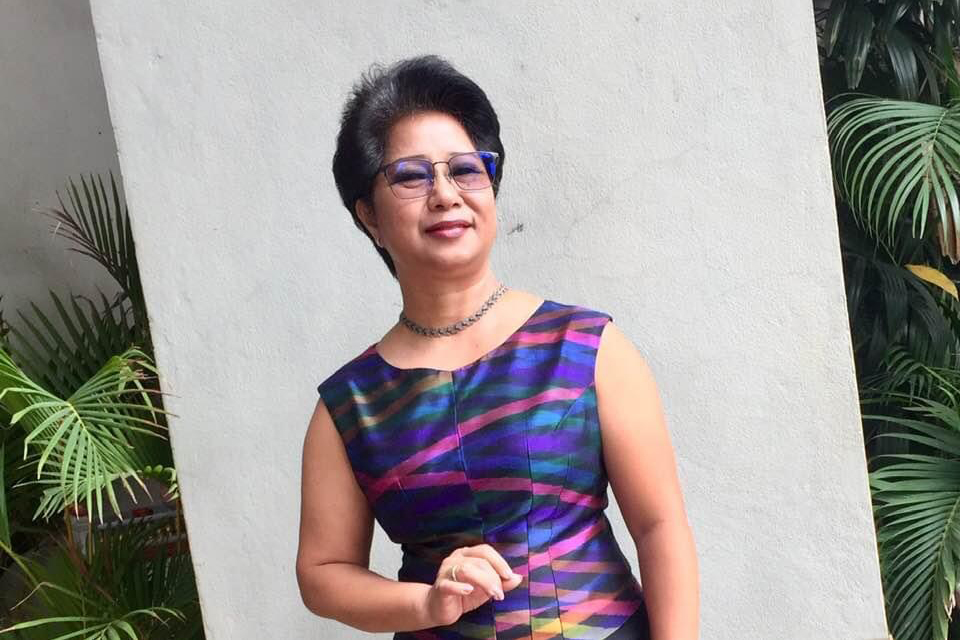
Sophiline Cheam Shapiro
Photo Credit: courtesy of artist
By Zara Lokoge
Sophiline Cheam Shapiro is one of Cambodia’s most talented, disciplined, and resilient classical dancers. She has played a pivotal role in preserving her country’s most cherished traditions and her work shall serve as an inspiration to many. On March 20, 2024, I had the pleasure of speaking with Sophiline, and learned about her exceptional contributions. Through this, I gained insight into the journey that led her to become the artist she is today.
About Sophiline’s Family:
Sophiline found her connection to dance at the young age of 13. She was heavily influenced by her family, and in particular, her brother-in-law who was a folk dancer and her mother. It was when her brother-in-law was invited to join a cultural center in the province of Battambang that she found a community within dance. At this center, new generations were trained and could hone in on their art form. Sophiline also mentioned that her mother would cook for her and others at the center. I asked about what she enjoyed eating most, and she fondly mentioned sweet and sour soup, which is very popular in Khmer culture. This traditional soup had fish, morning glory, tamarind, and kreung– which is a very important paste made of lemongrass. Sophiline also mentioned a few other kinds of soups, all of which fueled her and the other artists on a daily basis.
About Art and its Power to Heal:
Furthermore, Sophiline talked about how her community of artists helped overcome the suffering and grief caused by the Khmer Rouge. The Khmer Rouge, in power from the mid-to late 1970s, was a radical movement that led to starvation, evacuation from cities and towns, and millions of deaths in Cambodia. During this tragic genocide, traditional art forms in Cambodia were strictly looked down upon and those in the performing arts had to suppress their talent. Sophiline spoke about her time during this period of loss and what it meant for her to be an artist. She spoke of an annual festival that many would come to attend, where individuals had the opportunity to express feelings of grief and to come together and cry. There would be conversations between people about how life has been since the Khmer Rouge, and an exchange of information that allowed for deeper understanding.
Sophiline mentioned that the most heartbreaking thing about this time when people would meet at the festival was that it was a way to “survey” who had survived, disappeared, or died. Being with her community of artists and sharing deep feelings led Sophiline to another institute in Phnom Penh– the national theater. There, she would work with other students who were displaced due to the Khmer Rouge, and it would be the start of her everlasting career.
Sophiline on the Preservation of Art:
I asked Sophiline what re-establishment after the Khmer Rouge meant for her and other artists. She said that oftentimes, re-establishment meant creating new work. Tragically, Sophiline lost her father and two brothers during this time but was able to heal from this personal suffering by teaching younger generations of artists new movements while preserving traditional values.
She talked about art, and what happens when we are not able to practice it. “Art is like humans. If we don’t eat, we suffer. If I move, you’re seeing me dance. And if I stop, the dance stops. It’s so easy to make it appear but then disappear again. It is what dancers put into it that makes our art form what it is. Dance will wilt down if you don’t tend to it.” This idea of reciprocity was a very valuable concept that Sophiline brought up, and resonated with me as an artist, too. When we don’t treat our art form with appreciation and care, it’s easy to lose it. This is why Sophiline emphasized the importance of sharing her practice between generations and preserving it with the utmost care.
About Sophiline’s Current Work:
Sophiline is looking forward to her next endeavor – visiting students at Cornell University and sharing a powerful dance that she has choreographed called “The Giant Lover.” In Khmer classical dance there are many roles to be played, including but not limited to the monkey, giant, and the female. While she feels connected to all roles, Sophiline is enjoying playing the role of the giant as of now. She wants to celebrate her character through this role and explained that choreography is not just about movements, but about movements that tell a story.
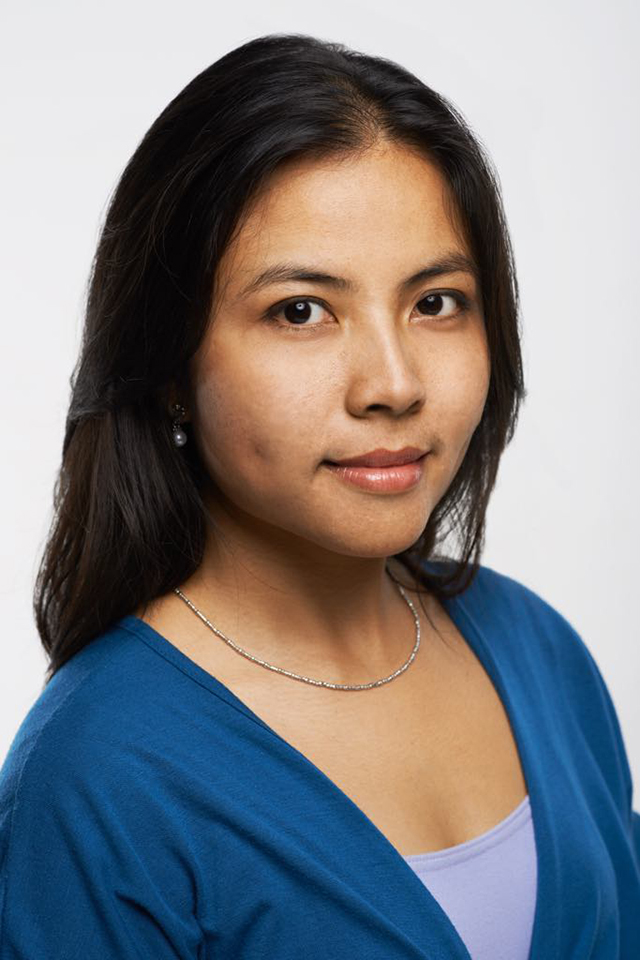
Chey Chankethya
Photo Credit: courtesy of artist
In preparation for Prumsodun Ok’s performance this April 18th I interviewed Chey Chankethya. Neak Kru (an honorific term for teacher) Kethya is an accomplished traditional and contemporary dancer who currently works in Cambodia’s Ministry of Culture and Fine Arts.
Cambodian traditional dance has a deep connection with the country’s history having been with it through the many permutations of the nation since the 7th century. Throughout the dance’s storied history, it has evolved from serving various patronized deities to now being an activity that many can access and enjoy. As the dance has grown so have the dancers with many modern dancers taking their experience with traditional folk and classical movements and recontextualizing them in contemporary dance.
Neak Kru Kethya herself commented on this stating that, to her, contemporary dance is self-reflective and that it allows her to carry on the tradition of Cambodian dance while simultaneously expressing herself as an artist. This process of self-reflection can also be applied societally instead of personally. On this, Neak Kru Kethya noted that contemporary dance appreciates individualism, and that this appreciation should be reflected in society as there is a lack of this in Cambodia. She believes that doing so would lead to greater cultural richness. Finally, Neak Kru believes that this requires you to be your own leader so that, in your own way, you can contribute back to and be a more connected part of your community.
Prumsodun Ok embodies this spirit in many ways. He not only brings visibility to the LGBTQ+ people in traditional Cambodian dance and Cambodia more broadly but has also created a community for them by founding the first all gay traditional dance company in Cambodia and in doing so, has contributed to the richness of Cambodian society.
Beyond what he has done for the LGBTQ+ people in Cambodia, he continues to reflect on humanity’s strained relationship with the ocean in the dance he will bring to Brandeis, A Deepest Blue.
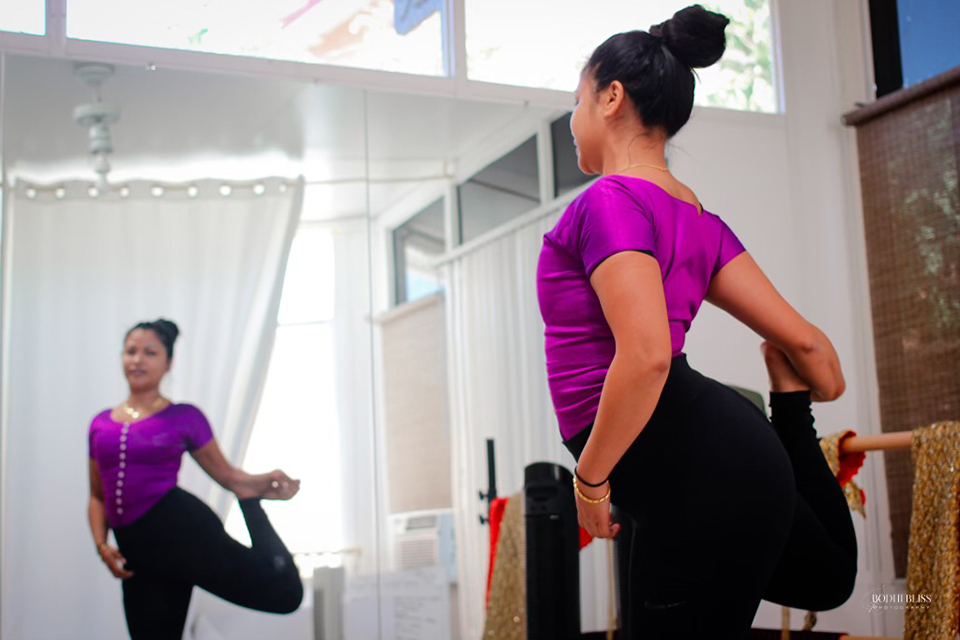
Mea Lath
Photo Credit: courtesy of artist
By Julianna Lapham
Mea Lath is a professional Cambodian classical dancer and instructor currently residing in Long Beach, California. Mea began learning dance at the age of 12 under the tutelage of renowned Cambodian dancer and choreographer Sophiline Cheam Shapiro at Khmer Arts Academy, founded by Cheam Shapiro and her husband in 2002. After spending years at the academy, Mea was asked to be an instructor, and teaching alongside Mea was Cambodian dancer and choreographer Prumsodun Ok. When Prumsodun left for Cambodia where he eventually founded his own dance company, Mea and Prumsodun’s younger sister were left with the responsibility of not only teaching the entire academy of dancers, but also keeping the organization open. Mea shares,
Ever since I took on those big roles, I had always felt this huge responsibility of, if I don't continue or do this work, that the quality and the integrity of this dance form is going to be lost. And as you know, with many nonprofits, there comes a lot of challenges, and unfortunately, Khmer Arts Academy did have to close its doors in 2022.
After the closing of Khmer Arts Academy, Mea decided to focus on her own personal future while still dancing independently. As time progressed, Mea came to realize how much she truly missed guiding and teaching the art form of Cambodian classical dance. Mea shares,
Especially with this newer generation they're very disconnected from the culture, and just to see their excitement and see the progress when they are able to perform on stage…it's a very proud moment and I see that, besides feeling responsible for it, I do enjoy the passing on and the teaching of this art form.
After spending that time away from teaching, Mea also noted that she was facing a lot of feelings of imposter syndrome:
I really look up to Prumsodun, too, since he is just so amazing and creative. So I was thinking, well, I'm not at that level so how could I even do this art form justice and really do this properly?
After taking time to sit and think about what to do next, Mea found the courage to start up her own dance company. Modern Apsara Company was founded in 2022, and is located in Long Beach. Mea explains:
I named it Modern Apsara Company, not because we're doing modern dance or really creating new work yet, that is still my intention, but I think of a Modern Apsara as someone who still preserves the essence of the art form, but in a new environment and circumstances.
Today, Mea has the responsibility of running Modern Apsara Company, where she is currently the lead instructor. At first, Mea shared that she had almost fifty dancers, but had to cut down the number in order to keep the quality of the art form intact. The art of Cambodian dance is a very hands-on art form that, as Mea stated, “requires a lot of molding.” Mea hopes that in the future Modern Apsara will have more instructors in order to overcome limitations. For her senior dancers, Mea hopes that they maintain a love of Cambodian dance in order to preserve and continue the art form. Mea shares,
My hope for Cambodian dance in general is that the next generation falls in love with it as well and helps to innovate, while still maintaining the very essence of what Cambodian classical dance is, but also with telling new stories that are more relevant to their experiences in the world that they live in.
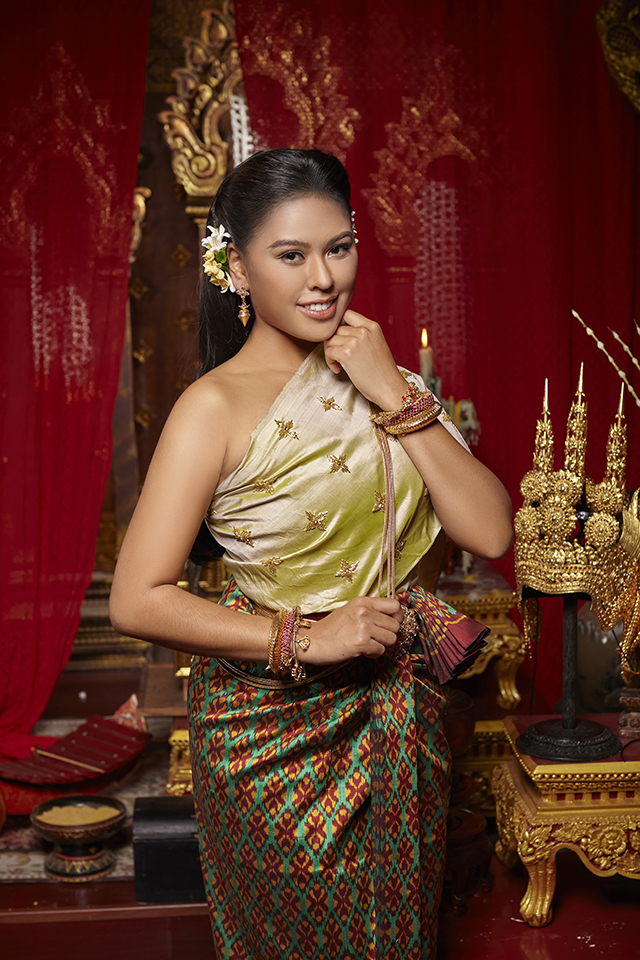
Virginia Prak
Photo Credit: courtesy of artist
By Justin Coumou
Virginia Prak is a 30-year-old Cambodian American living in Hawaii whose spirit and identity truly reside in traditional Khmer dance. Originally from Lowell, Massachusetts, Virginia began learning to dance at around eight years old and, remarkably, has continued dancing for over 22 years. Virginia shared,
Usually, parents put their kids into these programs because they want their daughter or son to be a dancer, but I chose this as a kid unknowingly and then I just continued to follow it wherever I went.
Fortunately for Virginia, her neighbor was the founder of the Angkor Dance Troupe in Lowell. His daughter was the same age as Virginia and the two would always play together, and soon started learning to dance. It was here that Virginia began to foster her love for Khmer dance and her ability to perform. For Virginia, it was dancing that taught her what it means to be Cambodian and connected her to the culture that eventually became inseparable from her own identity.
What keeps me coming back is I think spiritually I feel so connected that it’s hard to leave and I love it. I just feel like for an art form that was almost lost, I was lucky enough to be one of the chosen students to learn and to keep passing it on, which I still do today.
Virginia now serves as a principal dancer and instructor for the Angkor Dance Troupe, and was formerly a board member.
Perhaps one of the most interesting aspects of Khmer dance is that the dance itself tells a story in its movements. “We tell a story with our hands…” Virginia explains. The hand gestures themselves are kept constant in different performances, and each conveys specific meanings when combined with leg and arm placement, facial expression, and song lyrics. For those unfamiliar with the gestures, however, there is still a level of appreciation that can be understood simply from observing the dancers and their reactions. They are in fact expressing a story in terms of emotions that we all may relate to.
Usually, when I’m dancing, I just do my best to embody the role or the spirit. Sometimes the audience won’t know what the lyrics or the gestures or the movements mean, but I think facial expressions can really help the audience figure out what is happening in the story.
Virginia now has her own students and works to pass the traditions of Khmer dance on to the next generation of Cambodian Americans. She teaches workshops in Long Beach, California, and collaborates with non-profit organizations such as the Khmer Community of Seattle King County.
Growing up in the United States added difficulty to Virginia’s own experience of learning Khmer dance. Separation from Cambodian culture and especially language barriers complicated her journey and required great commitment. Virginia feels that using her own background she can serve a special role in bringing Khmer dance to the newer generation more easily and without as many obstacles to entry.
I think the passing on of the knowledge is extremely special for me and I enjoy doing it too, because I feel communicating it to other Khmer-American kids is easier than how I learned it from my Master teacher because of the language barriers.
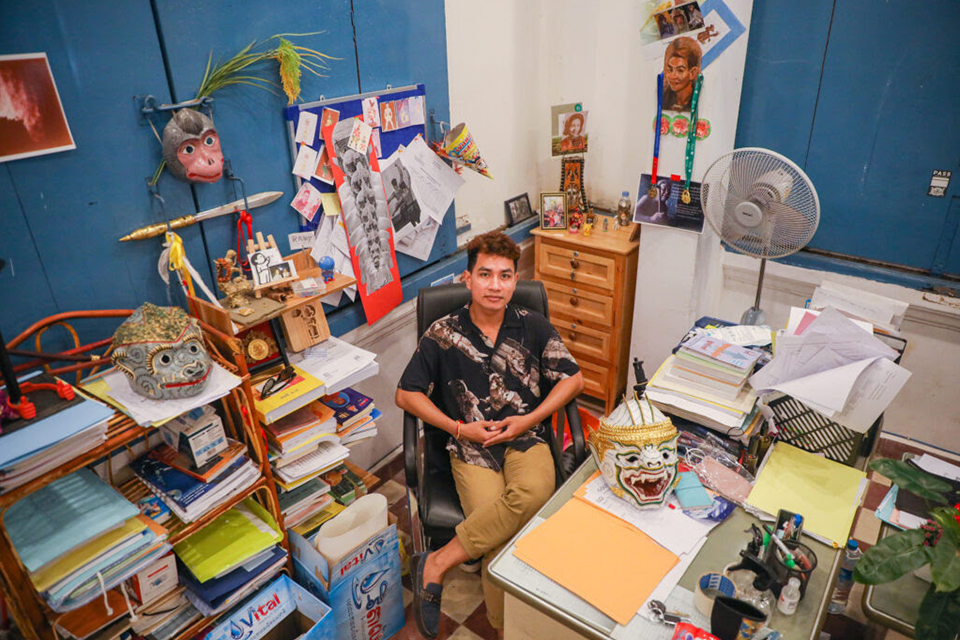
Nget Rady
Photo Credit: courtesy of artist
Nget Rady was born in 1988 in Phnom Penh, Cambodia, and has been dancing for almost 20 years. He is both a classical and a contemporary dancer. Rady has always specialized in the monkey role of Cambodian male masked dance. Rady got a degree in Choreographic Arts from the Royal University of Fine Arts in Phnom Penh. Rady has been featured in many festivals and dance performances across the globe, including in the US, Europe, and Asia. Dance has changed Rady’s life and he wishes to share its beauty with the next generation of Cambodian dancers.
Recent Work:
Rady has created many new pieces in the last few years. He made a piece called The Feeling for Street Children as well as a short film called Forward. He also has recently created two short pieces titled Roots and Saker. Both of these pieces are contemporary but incorporate principles of classical Cambodian dance. In the Roots piece, Rady seeks to explore the interaction between the roots of historical Cambodian dance with contemporary dance. In this piece he unites six traditional art forms with one work of contemporary dance. He believes that no culture exists by itself and wants the audience to consider what these art forms represent in present day Cambodia.
The Monkey Role:
Rady has pretty much always performed the monkey role in his dance performances but he has tried to adapt and modernize the role. His teacher, when he was growing up, always emphasized the importance of learning all of the roles to truly understand the choreography as well as being able to choreograph yourself. He has almost always performed in the monkey role but five years ago he performed in a different role, this time as the giant. Within the monkey role, Rady has performed as the small monkey and the big monkey, both of which he believes are very special. He has used the classical monkey role to build out new, contemporary roles and the monkey is usually the main character in his choreography.
Ideology behind Choreography:
Rady has mainly moved into the choreographing space by this point in his career and he works with many different artists to construct his dances. Sometimes the dancers he works with are not contemporary and sometimes they have limited experience in classical dance. He tries to shape his choreography to match the strengths of his dancers. He oftentimes likes to let the dancers take the liberty of shaping their own dance as he believes it feels more organic. He very much enjoys working with the next generation of Cambodian dancers as he believes they are very talented and are the future of Cambodian dance.
Hopes for the Future:
Rady hopes to continue with Cambodian dance and transition it to the next generation. Currently he has a dance group composed of professional performers and students. He hopes for them to all become professionals someday. In terms of dance, Rady hopes to develop dance to reflect modern society. He wants to take on more modern themes and perspectives in his dances. Rady believes that in dance and choreography it is not always about the final product but the perspective behind the concept.
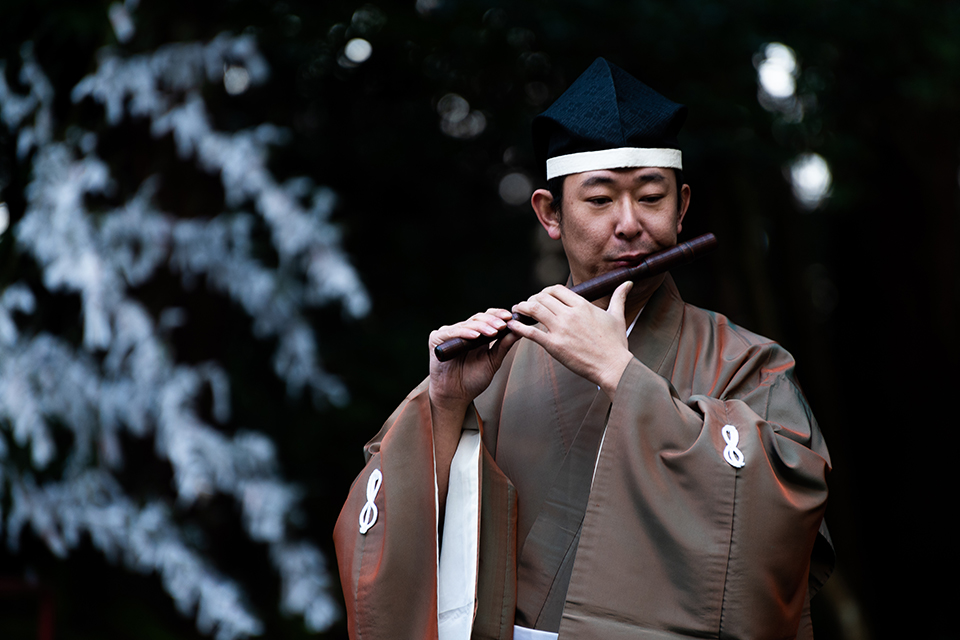
Ota Yutaka
Photo Credit: courtesy of artist
Introduction:
Having a strong interest in music since his youth, Ota Yutaka became a connoisseur of various music forms, including jazz and classic rock. He embraced the ancient art of gagaku at the age of 16, focusing on the ryuteki (also known as the dragon flute). Additionally, Ota’s dynamic musicality flourished during his studies under Shiba Sukeyasu at Tokyo University of the Arts, which led to his unique blend of both traditional and contemporary musical expressions that he came to love. He was, for example, a member of the avant-garde Butoh jazz band Shibusashirazu, where he predominantly played the alto saxophone.
Gagaku Music (Ryuteki):
The ryuteki (dragon flute), often heard in gagaku performances, is a bamboo flute that symbolizes the dragon’s voice, hence the name. This flute has a strong cultural significance because it embodies Japan’s deep connection to nature and spirituality. Ota’s unique approach to the ryuteki is infused with a respect for the constraints and the structured nature of traditional gagaku, while also drawing on influences from the improvisational spirit of his jazz background. Thus, this discipline allows him to navigate the intricate interplay between both freedom and formality.
Collaboration with Prumsodun Ok:
Ota Yutaka and Cambodian artist Prumsodun Ok’s current collaboration explores the intercultural play that aims to weave together the artistic threads of both Cambodian dance and gagaku music traditions. While Ota brings his expertise in gagaku to the table, Prumsodun also contributes to the dialogue by melding his choreographic elements of Cambodian classical dance, allowing for a distinct and unique element of rhythmic and melodic intricacies.
Message of the Performance:
In this particular performance, Ota seeks to convey the universal significance of environmental conservation through a narrative centered around water and its symbolic and actual relationship with life and nature. This resonates well with both Cambodian and Japanese cultures because of their shared religious connection to Buddhism, the significance each places on elements of their geography, and similarities in certain folktales that are often passed down for generations. The underlying message is one of connectedness and responsibility, using the cultural lens of gagaku and the narrative power of dance to spark a deeper reflection and dialogue on our role in preserving the natural world.